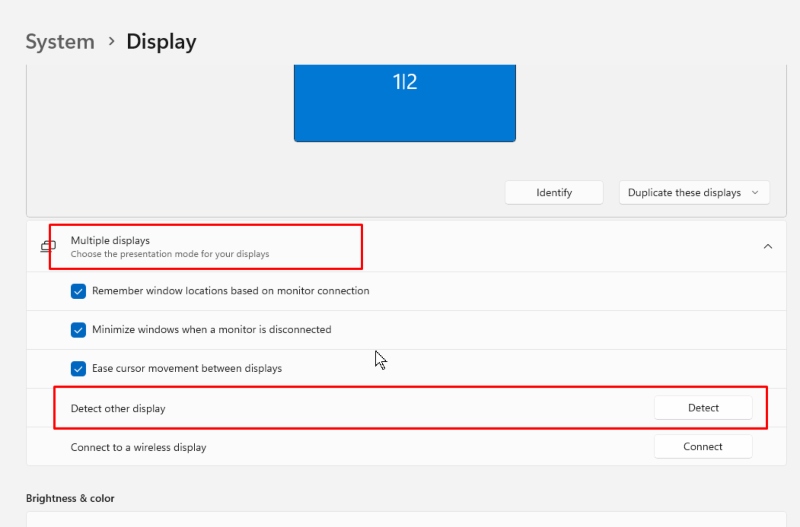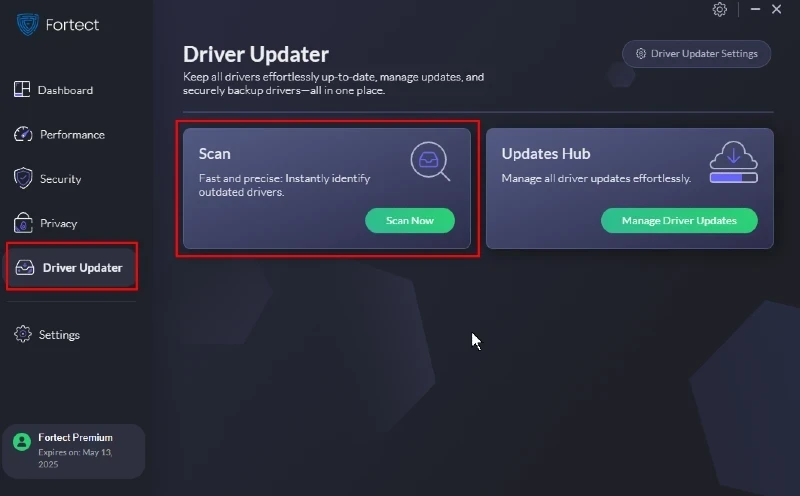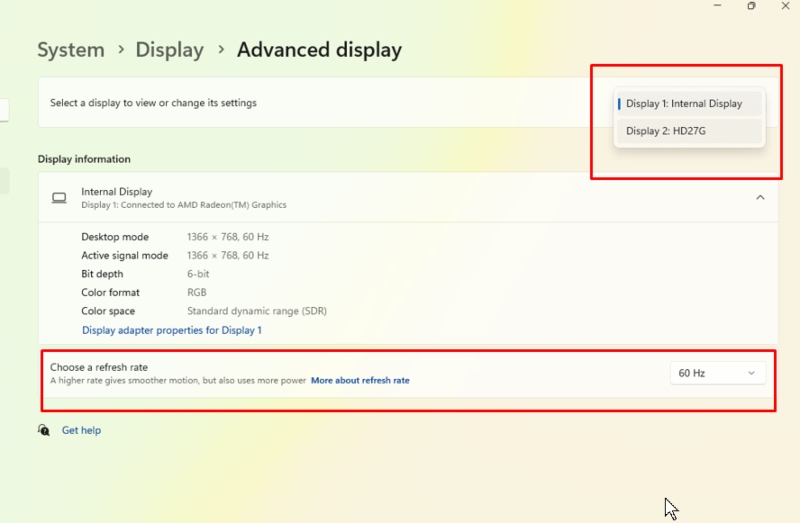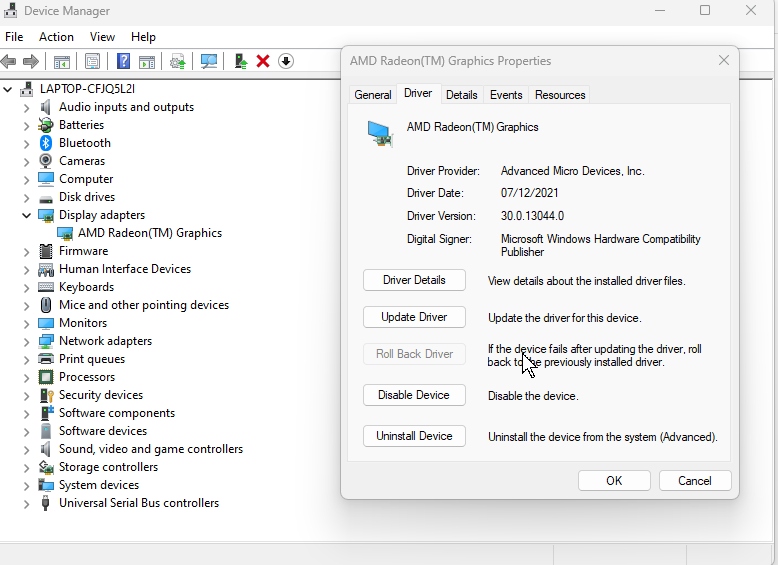How to Fix Windows 11 Not Detecting Your Second Monitor
Dual monitors are a game-changer for juggling multiple tasks and boosting productivity without breaking a sweat. But it’s like losing half your workspace when that second screen darkens. Suddenly, you’re squinting at a single display, feeling handicapped. It’s incredible how quickly you adapt to the extra space – and how frustrating it is when it vanishes.
Should I say, “Don’t panic”? For I would (chuckles).
Let’s check some common issues that can knock out your second screen and how to get it back up and running. With a few troubleshooting tricks, you’ll be back to your dual-screen setup before you know it.
Common Causes of Windows 11 Not Detecting Second Your Monitor
Incorrect Display Settings: Windows 11 may not always automatically detect or correctly configure multiple displays. The system might be set to output to a single screen or misidentified connected monitors. Reviewing and adjusting display settings often resolve these issues.
Hardware Compatibility: Compatibility issues can arise between Windows 11 and specific monitor models, particularly older ones. Problems may also stem from faulty cables, loose connections, or incompatible ports. Ensuring all hardware components are compatible with Windows 11 and properly connected is essential for multi-monitor setups.
Outdated or Corrupted Graphics Drivers: Graphics drivers are crucial in managing display outputs. Outdated, corrupted, or incompatible drivers can prevent Windows 11 from recognizing additional monitors. Updating or reinstalling the latest compatible drivers often rectifies these detection problems.
7 Fixes: Windows 11 Not Detecting Second Monitor
Discover straightforward steps to troubleshoot why your second monitor suddenly stopped detecting in Windows 11, even if it worked perfectly the day before or within the last 24 hours.
Check Display Settings
Sometimes, Windows 11 needs a little nudge to recognize your second monitor. Adjusting your display settings can often solve the problem quickly:

- Click on Start and choose Settings.
- Look for Display
- Scroll down to “Multiple displays.”
- Click “Detect” to force Windows to look for your second monitor
- If detected, choose “Extend these displays” from the dropdown menu
Update Graphics Drivers
Outdated or faulty graphics drivers are a common culprit for display issues. Keeping your drivers up-to-date can resolve many recognition problems:
- Press the Windows key + X and select “Device Manager.”
- Expand “Display adapters”
- Right-click on your graphics card and select “Update driver.”
- Choose “Search automatically for updated driver software.”
- If no updates are found, visit your graphics card manufacturer’s website for the latest drivers.
If you suspect that an outdated driver is suddenly causing your second monitor to stop displaying, consider using Fortect PC Solution with its Driver Updater feature. The free version allows you to update installed drivers manually. In contrast, the premium version automatically scans all installed drivers and evaluates and updates all outdated drivers, ensuring your system remains up-to-date with minimal effort.

Download and Install Fortect now.
Verify Cable Connections
It may seem obvious, but loose or faulty connections are often the root cause. A quick check of your hardware can save you a lot of troubleshooting time:
- Check that the cable is securely connected to both the monitor and the PC
- Try using a different port on your PC or graphics card.
- If possible, test with a different cable to rule out cable failure
Refresh Rate for the Second Monitor
Sometimes, display issues can be caused by mismatched refresh rates. Adjusting the refresh rate of your second monitor might resolve recognition problems:

- Right-click on the desktop and select “Taskbar settings.”
- Type Display Settings on the search field located on the upper left of the taskbar settings screen
- Scroll down and click on “Advanced display settings.”
- Select your second monitor from the dropdown menu
- Click on “Display adapter properties for Display 2.”
- Go to the “Monitor” tab and adjust the refresh rate
- Click “Apply” and then “OK.”
Use Device Manager to Check Drivers
Device Manager provides a comprehensive view of all hardware on your system. It’s a valuable tool for checking and managing drivers:

- Right-click on the Start button and select “Device Manager.”
- Expand the “Display adapters” section
- Right-click on your graphics card and select “Properties.”
- Go to the “Driver” tab to view the current driver version and date
- If the driver is outdated, click “Update Driver.”
- Choose “Search automatically for updated driver software.”
- If Windows doesn’t find a new driver, visit the manufacturer’s website for the latest version.
Run Windows Troubleshooter
Windows has built-in tools to diagnose and fix common problems. The troubleshooter can often identify and resolve monitor recognition issues:
- Go to Settings > System > Troubleshoot > Other troubleshooters
- Find “Hardware and Devices” and click “Run”
- Follow the on-screen instructions to complete the troubleshooting process
Restart Graphics Driver
Sometimes, a quick reset of your graphics driver can resolve display issues without the need for a complete system reboot:
- Press the Windows key + Ctrl + Shift + B simultaneously.
- Your screen will go black momentarily, and you’ll hear a beep
- This restarts your graphics driver without rebooting your PC




